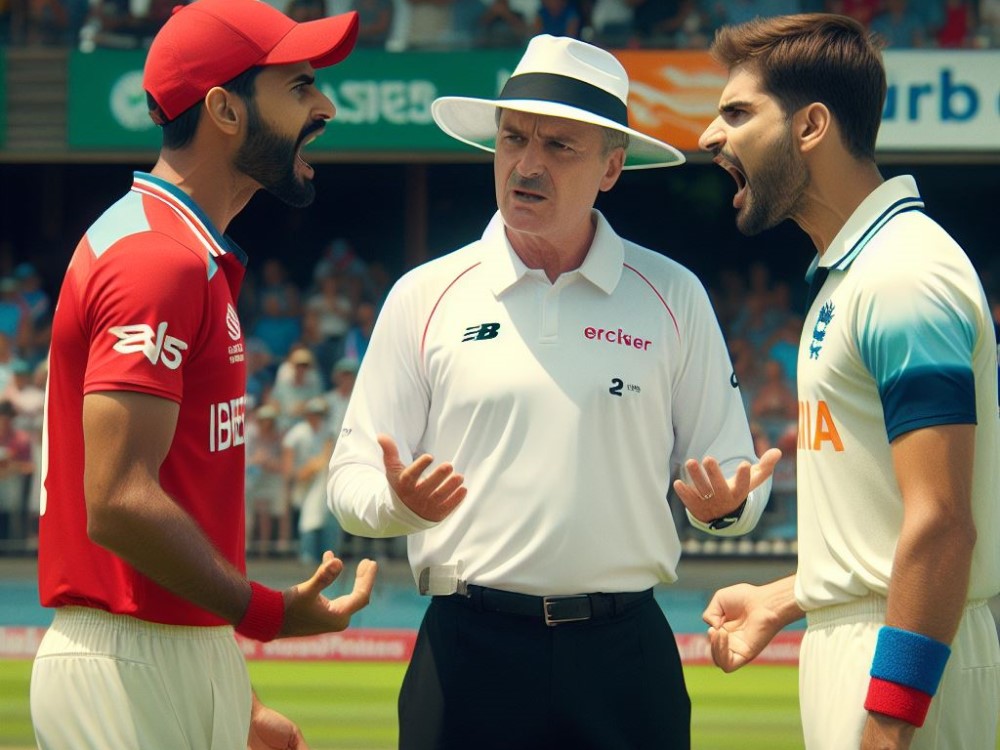
Beyond Heads or Tails: The Strategic Impact of the Toss in Cricket Matches
In the fast-paced world of cricket, where every ball bowled and every run scored can sway the balance of a match, there exists a seemingly simple yet pivotal moment that often goes overlooked: the toss. Beyond the mere ritual of determining which team will bat or bowl first, the toss holds significant strategic implications that can shape the outcome of a game. In this article, we delve deep into the strategic impact of the toss in cricket matches, uncovering its multifaceted influence on team dynamics, game plans, and ultimately, the final result.
At the outset, the toss in cricket matches may appear to be a matter of chance—a mere coin flip deciding the fate of the game. However, upon closer examination, it becomes evident that this seemingly arbitrary event carries far-reaching consequences that extend well beyond the start of play. Teams often approach the toss in cricket matches with meticulous planning and strategic intent, recognizing its potential to provide a crucial advantage in the contest ahead.
From a tactical standpoint, winning the toss affords a team the opportunity to tailor their approach to suit the prevailing conditions. Invariably, the state of the pitch, weather conditions, and other environmental factors play a pivotal role in determining the optimal course of action. Whether opting to bat first and set a formidable target or exploiting favorable bowling conditions to restrict the opposition early on, the toss grants teams the power to dictate the tempo and momentum of the game from the outset.
Moreover, the toss serves as a psychological battleground, where the mere act of winning can instill confidence and assert dominance over the opposition. The psychological edge gained from a successful toss victory can permeate throughout the team, imbuing players with a sense of self-assurance and conviction in their abilities. Conversely, losing the toss can prompt teams to adapt their strategies on the fly, potentially disrupting preconceived game plans and forcing them to recalibrate their approach on short notice.
Furthermore, the impact of the toss transcends the confines of individual matches, exerting a ripple effect that can shape the trajectory of entire series and tournaments. In tightly contested competitions where margins for error are slim, the outcome of the toss can serve as a decisive factor in determining the eventual victor. As such, teams often invest considerable time and resources in analyzing past trends, refining their tactics, and devising strategies to maximize their chances of success at the toss.
In conclusion, the toss in cricket matches represents far more than a mere formality—it is a strategic linchpin that can tip the scales in favor of the astute and the prepared. By recognizing the nuanced implications of the toss and harnessing its strategic potential, teams can gain a significant edge in the pursuit of victory on the cricketing field. Through the lens of the toss, we uncover a fascinating dimension of cricket strategy—one that underscores the importance of foresight, adaptability, and tactical acumen in the pursuit of sporting glory.
What is the Toss in Cricket Matches?

The toss, also known as a “coin toss” or “coin flip,” is a crucial event at the beginning of a match in various sports. It determines which team gets to choose their preferred side or option. In cricket, for example, the toss decides whether a team will bat or bowl first.
In tennis, it determines which player serves first. The toss can provide an advantage, especially in outdoor sports influenced by factors like weather conditions. It adds an element of unpredictability to the game, as the outcome of the toss often shapes the strategies and tactics employed by both teams.
How is the Toss Conducted?
The toss in a cricket match is conducted in a specific manner to determine which team gets to make the decision regarding batting or fielding. Here is a step-by-step breakdown of how the toss is conducted:
- The captains of both teams meet at the center of the pitch.
- The match referee or umpire presents the coin, usually a special coin with the team logos.
- The home team captain flips the coin and the visiting team captain calls heads or tails while the coin is in the air.
- The match referee or umpire catches the coin and checks which side is facing up.
- The team whose call matches the side facing up wins the toss.
- The winning captain then makes their decision regarding batting or fielding based on their team’s strategy and the conditions of the pitch and weather.
Importance of the Toss
Discover the crucial role of the toss in cricket matches as we explore the significance of this pivotal moment. Delve into the decision-making process of batting or fielding, and the profound impact it has on a team’s strategy.
Uncover how the outcome of the toss can even influence the pitch conditions, shaping the dynamics of the game. Join us as we unravel the importance of the toss and its far-reaching implications in the world of sports.
Decision of Batting or Fielding
When it comes to the decision of batting or fielding after winning the toss in a cricket match, teams carefully consider several factors before making their choice.
- Assess the pitch conditions: Teams analyze the state of the pitch, including its hardness, grass coverage, moisture, and potential for deterioration.
- Consider weather conditions: It is important to take into account the current weather and forecast, as it can influence the behavior of the pitch and the game.
- Evaluate team strengths: Teams consider their batting and bowling line-ups, their confidence levels, and their historical performances in similar conditions.
- Analyze the opposition: It is crucial to understand the strengths and weaknesses of the opposing team’s batting and bowling line-ups before making a decision based on that information.
- Strategize for target or chase: The team’s game plan and tactical approach, whether they prefer setting a target or chasing a score, should be considered before making the final decision.
By carefully considering these factors, teams can make an informed decision about whether to bat or field after winning the toss.
Influence on Team Strategy
The toss at the beginning of a cricket match has a profound influence on a team’s strategy. Winning the toss allows the team to decide whether to bat or field first, which can be based on various factors such as pitch conditions, weather, and team strengths.
The outcome of the toss has tactical significance as it sets the target for the team batting second or grants them the opportunity to chase a target. This significantly impacts the approach and tactics employed by both teams throughout the match.
Furthermore, the toss can also have an impact on the pitch conditions. The team batting first may strategically use the freshness or deterioration of the pitch to their advantage.
However, controversies have surrounded the toss, particularly concerning home advantage and perceptions of bias towards certain teams.
Impact on Pitch Conditions
The outcome of the toss at the beginning of a match has a significant impact on the conditions of the pitch. The winning team gets to choose whether to bat or field first, and this choice can greatly affect how the pitch behaves.
Opting to bat first may lead to the pitch deteriorating over time, making it more challenging for the team batting second. Conversely, choosing to field first enables the team to take advantage of the fresh pitch and potentially exploit any early movement or bounce. Hence, the outcome of the toss can heavily influence the playing conditions and strategy for both teams.
In order to make the most of the toss, teams should carefully consider various factors, including weather conditions, pitch conditions, and their own strengths. It is crucial for match officials to ensure fairness and prevent any biases related to the toss outcome. By thoroughly assessing the pitch conditions and making well-informed decisions, teams can gain an advantage right from the start of the game.
Factors Affecting the Toss Decision

When it comes to the toss at the beginning of a match, several factors come into play that affect the decision-making process. From the weather conditions to the pitch conditions and the strengths of the teams, each element can sway the outcome of the game.
So, let’s dive into these factors and explore how they influence the crucial toss decision in a match. Hang tight for some interesting insights backed by reliable sources!
Weather Conditions
Weather conditions play a significant role in determining the outcome of the toss at the commencement of a cricket match. When deciding whether to bat or field first, teams take into account the prevailing weather conditions. In the event of hot and sunny weather, teams may prefer to opt for batting first, capitalizing on the favorable conditions for batting.
On the other hand, if the weather is overcast or if there is a possibility of rain, teams may choose to field first in hopeful anticipation of swing or movement in the air.
Additionally, the weather conditions can also affect the condition of the pitch, as moisture can alter the behavior of the ball.
Consequently, teams meticulously analyze the weather forecast in order to make an informed decision during the toss in cricket matches.
Pitch Conditions
Pitch conditions are of utmost importance in the game of cricket. They hold the power to greatly influence the outcome of a match and the strategies employed by the teams. The condition of the pitch, including its hardness, moisture level, and cracks, can have a significant impact on the bounce and movement of the ball.
Depending on their characteristics, certain pitches may favor spinners or pacers. Therefore, teams carefully consider pitch conditions when deciding whether to bat or field first, recognizing its potential to greatly affect the game’s outcome.
For instance, if the pitch is dry and crumbling, spinners may have the advantage, making it beneficial for the team batting last to pursue a target. A remarkable occurrence highlighting the significance of pitch conditions took place during the 1973 Ashes series between England and Australia. In the first test match, England won the toss and opted to bat on a pitch covered with grass.
However, due to a miscommunication with the groundsman, the grass remained uncut. Consequently, the grass quickly dried up and played a vital role in England’s defeat as Australia exploited the uneven bounce and seam movement throughout the match. This incident stands as a testament to the importance of pitch conditions in cricket matches.
Team Strengths
Team strengths play a crucial role in the significance of the toss at the beginning of a match. Here are some points to consider regarding team strengths when it comes to the toss:
- If a team has a strong batting lineup, they may prefer to bat first to set a high target for the opposition.
- Conversely, if a team has a strong bowling attack, they may choose to bowl first and restrict the opposition’s run-scoring opportunities.
- A team with excellent fielding skills may opt to field first and put pressure on the opponents with their sharp fielding and catching abilities.
By understanding their own team strengths, teams can make an informed decision during the toss, which can have a significant impact on the outcome of the match.
Tactical Significance of the Toss Outcome
Discover the tactical significance of the toss outcome in a match. From setting a target to chasing it down, we’ll explore how this crucial decision impacts the game. Find out how teams strategize based on the outcome and gain an edge on the field. Get ready to unveil the secrets behind the toss in cricket matches and its role in shaping the course of a match.
Setting a Target
Setting a target in a cricket match involves strategic decision-making and careful planning by the team winning the toss. Here are the steps involved in setting a target:
- Assess the pitch conditions and weather to determine the ideal target score for setting a challenging goal.
- Evaluate the strength and weakness of the opposing team’s bowling attack when setting a target.
- Consider the current form and ability of the team’s batsmen to ensure a strong target.
- Review the target set by the opposing team, if they have already batted, to determine the competitive target.
- Select batsmen based on their skills and ability to score runs quickly while setting the target.
- Calculate the run rate required to set a challenging target and put pressure on the opposition.
- Adjust the target based on the number of overs left in the match to maintain a strategic advantage.
By following these steps, teams can strategically set a target that puts pressure on the opposing team and increases their chances of winning the match.
Chasing a Target
- Chasing a target in a cricket match is an important strategy that teams employ to win the game. Here are the steps involved:
- Assessing the target: The chasing team evaluates the target set by the opposing team, taking into account the total runs required and the number of overs remaining.
- Calculating the required run rate: Based on the target and the available overs, the team determines the required run rate per over to achieve victory.
- Building partnerships: Batsmen focus on building partnerships and rotating the strike to keep the scoreboard ticking.
- Maintaining wickets: Losing wickets puts pressure on the chasing team, so batsmen aim to preserve their wickets while scoring runs.
- Managing the chase: Batsmen strategically pace their innings, accelerating when necessary and consolidating when the required run rate is under control.
In the 2019 Cricket World Cup, England successfully chased a target of 241 runs in the final against New Zealand to claim their first-ever World Cup title in a thrilling super over.
Controversies Surrounding The toss in Cricket Matches

Controversies surrounding the toss in cricket have sparked debates and discussions among players and fans alike. From home advantage to the perception of bias, these sub-sections shed light on the controversial aspects of this crucial pre-match ritual.
Unveiling the influence of playing conditions and the potential for unfairness, we delve into the impact that the toss can have on the outcome of a cricket match. So, get ready to unravel the secrets behind this seemingly innocuous starting procedure.
Home Advantage
Home advantage in the toss refers to the benefit that the home team may have in deciding the outcome of the toss in cricket matches at the beginning of a match. This advantage can influence the course of the game in several ways:
- Familiarity: The home team is likely to have better knowledge of the conditions, such as pitch behavior and weather patterns, giving them an edge in making the right decision.
- Crowd Support: The home team often enjoys the support of the home crowd, which can boost morale and create a more favorable atmosphere compared to the visiting team.
- Pitch Preparation: The home team has the opportunity to prepare the pitch to suit their strengths and exploit any weaknesses of the opposition.
In a cricket match, the home team won the toss and elected to bat first. The pitch was prepared to favor spin bowling, which was the home team’s strength. Their spin bowlers took full advantage, and the visiting team struggled to score runs. The home team eventually won the match comfortably, showcasing the significance of home advantage in the toss in cricket matches.
Perception of Bias
The perception of bias surrounding the toss at the beginning of a match can arise due to several factors. Some teams may feel that the toss in cricket matches is influenced by external factors such as home advantage, where the host team gets favorable conditions.
It’s important to note that the perception of bias is subjective and can vary from team to team. The toss in cricket matches is a critical moment in a match as it determines whether a team will bat or field first, potentially affecting the team’s strategy and the pitch conditions.
Ultimately, the ongoing debate in the cricketing world revolves around the perception of bias surrounding the toss in cricket matches.





